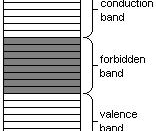Aim
The aim of this investigation is to reveal that the factor of length affects the overall resistance. So when changing the length of the conductor does resistance increase or decrease.
Prediction
I predict that as the length of the wire decreases so will the resistance. This is because through a shorter length of wire would allow more current to move through at a higher rate than a longer wire.
When the wire increases then the resistance will increase also. This is because as there is more and more wire there are more obstacles for the electrons to go around.
In my investigation however, relating with the certain lengths I expect twenty centimetres of wire to resolve in the lowest of resistance. Whereas, the length one hundred centimetres, I expect to carry the highest resistance. Therefore I expect more current to flow through on the shortest piece of wire.
Hypothesis
Current flows through a circuit.
Resistance is any opposition that prevents current from flowing through a circuit. Resistance is measured in ohms. The way to work out resistance is by this formula: R= V/I. There are many factors that cause and change resistance. Such as temperature, when the particles are heated they receive more energy causing them to vibrate and agitate. This causes more obstacle and obstruction for the electrons to easily pass through. When represented with a longer wire, resistance will increase. This is because it takes much more time for an electron to pass through. A shorter wire will allow current to pass through at a much higher rate. Resistance is also affected by cross sectional area. The wider the wire is the more electrons will pass through at any one time. But length is the most important one in this experiment.
As you can see from the...



Does this look like a science fair
Instead of just posting your lab reports, tell us why this stuff is relavent.
0 out of 0 people found this comment useful.